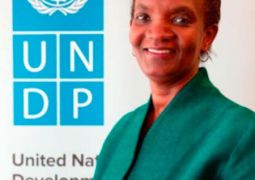Fish is the primary source of animal protein in the diet of vast majority of Gambians with an estimated national per capita consumption of 25 kilograms, one of the highest in West Africa, the deputy director of Fisheries has said.
Madam Anna Mbenga-Cham said the fisheries sector is such an important sector in The Gambia as it also accounts for about 12 per cent of the country’s gross domestic product (GDP).
She made the statement during a two-day midterm review workshop held at NaNA conference hall in Kanifing.The event was funded through the Fisheries Learning Partner Initiative project, financed by International Private Foundation, based in the United States of America.
The review was aimed at enhancing the understanding of the stakeholders on the gaps relating to social and economic incentives associated with fisheries conservation, management and development.
The deputy director of fisheries further said that fish and fish products increase food security, and improve the health of households in The Gambia.
Madam Cham said research has shown that about 200,000 people are directly or indirectly employed in the fisheries sector, including fishermen, in the country.
“In light of the above, the government of The Gambia spared no effort in developing various internationally recognised fisheries development policies, programmes and projects as far back as 1995,” she said.
Some of such documents include the 2006 fisheries policy; the Fisheries Act of 2007 and its associated Fisheries Regulations of 2008; and the Fisheries Strategic Action Plan of 2009 – 2013, which is being reviewed.
Also, fisheries infrastructures include the community fisheries centres, Brikama and Bakoteh modern fish markets, and the recently inaugurated fisheries jetty.
Madam Cham said despite all the benefits that can be accrued from the fisheries sector, it is threatened by the ever increasing illegal, unreported and unregulated (IUU) fishing.
The challenges of the sector also include over fishing, use of wetlands as waste land, habitat destruction, climate change, among others.
“The problems could certainly have been worst if immediate and collective actions were not taken,” she affirmed.“Having identified the challenges faced by the fisheries sector, there is now a new approach to communicating with rural people that seeks a better understanding of the local situation.”
The approach also involves rural people in identifying the issues that affect them most directly.This is what led to the adoption of techniques such as rapid rural appraisal, ecosystem approach to fisheries and fisheries management.
Ebrima Sarr,
NASCOM president, said the USAID/Ba Nafaa fisheries project was introduced as a
collaborative effective fisheries resource conservation, management and
development.
Read Other Articles In Article (Archive)
Workshop for human influenza pandemic opens
Jan 8, 2010, 10:04 AM

Pa Saikou’s coach seeks Hibernian consistency after draw at Celtic
Sep 5, 2012, 10:20 AM



